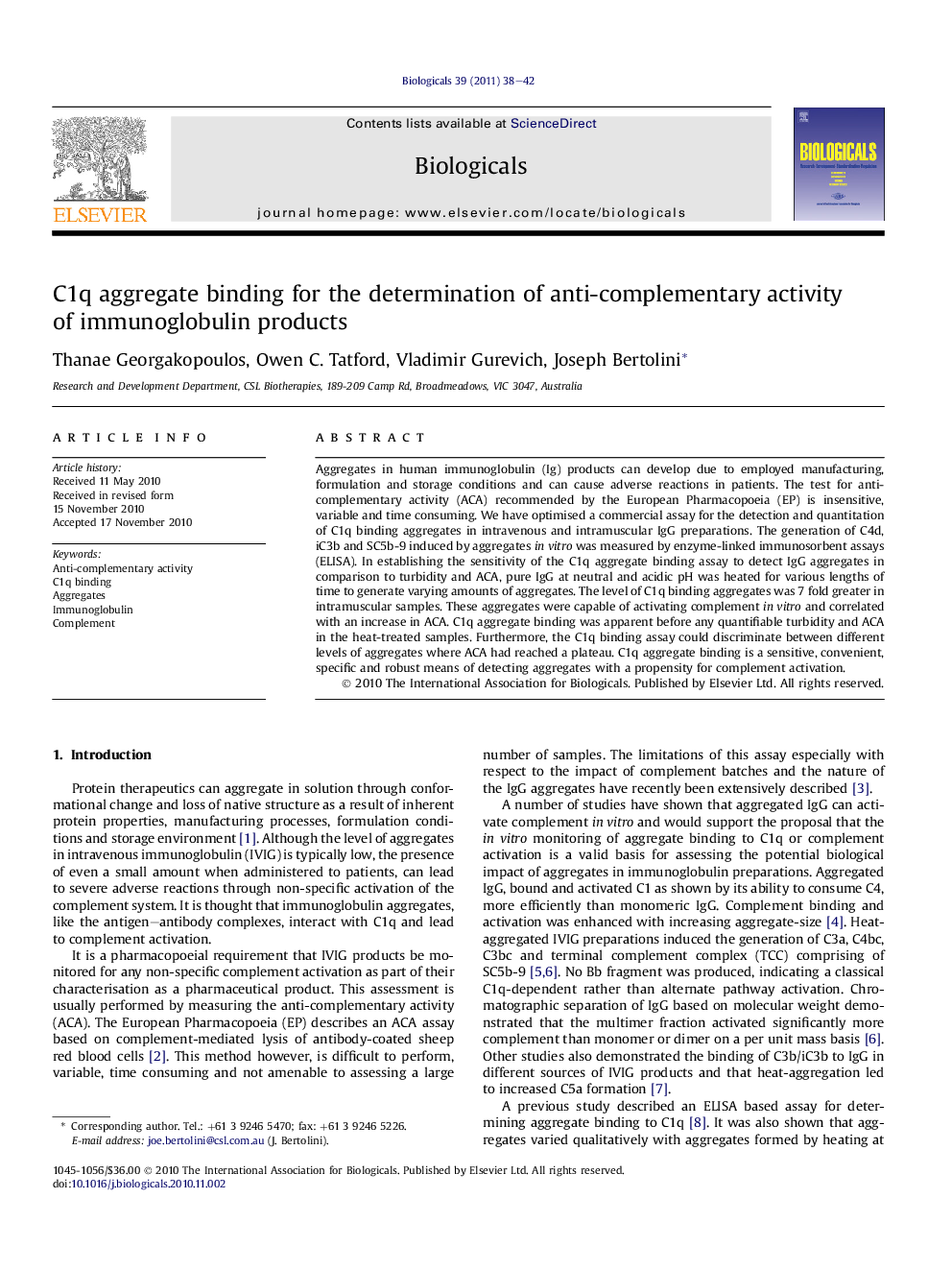| Article ID | Journal | Published Year | Pages | File Type |
|---|---|---|---|---|
| 2034383 | Biologicals | 2011 | 5 Pages |
Aggregates in human immunoglobulin (Ig) products can develop due to employed manufacturing, formulation and storage conditions and can cause adverse reactions in patients. The test for anti-complementary activity (ACA) recommended by the European Pharmacopoeia (EP) is insensitive, variable and time consuming. We have optimised a commercial assay for the detection and quantitation of C1q binding aggregates in intravenous and intramuscular IgG preparations. The generation of C4d, iC3b and SC5b-9 induced by aggregates in vitro was measured by enzyme-linked immunosorbent assays (ELISA). In establishing the sensitivity of the C1q aggregate binding assay to detect IgG aggregates in comparison to turbidity and ACA, pure IgG at neutral and acidic pH was heated for various lengths of time to generate varying amounts of aggregates. The level of C1q binding aggregates was 7 fold greater in intramuscular samples. These aggregates were capable of activating complement in vitro and correlated with an increase in ACA. C1q aggregate binding was apparent before any quantifiable turbidity and ACA in the heat-treated samples. Furthermore, the C1q binding assay could discriminate between different levels of aggregates where ACA had reached a plateau. C1q aggregate binding is a sensitive, convenient, specific and robust means of detecting aggregates with a propensity for complement activation.
